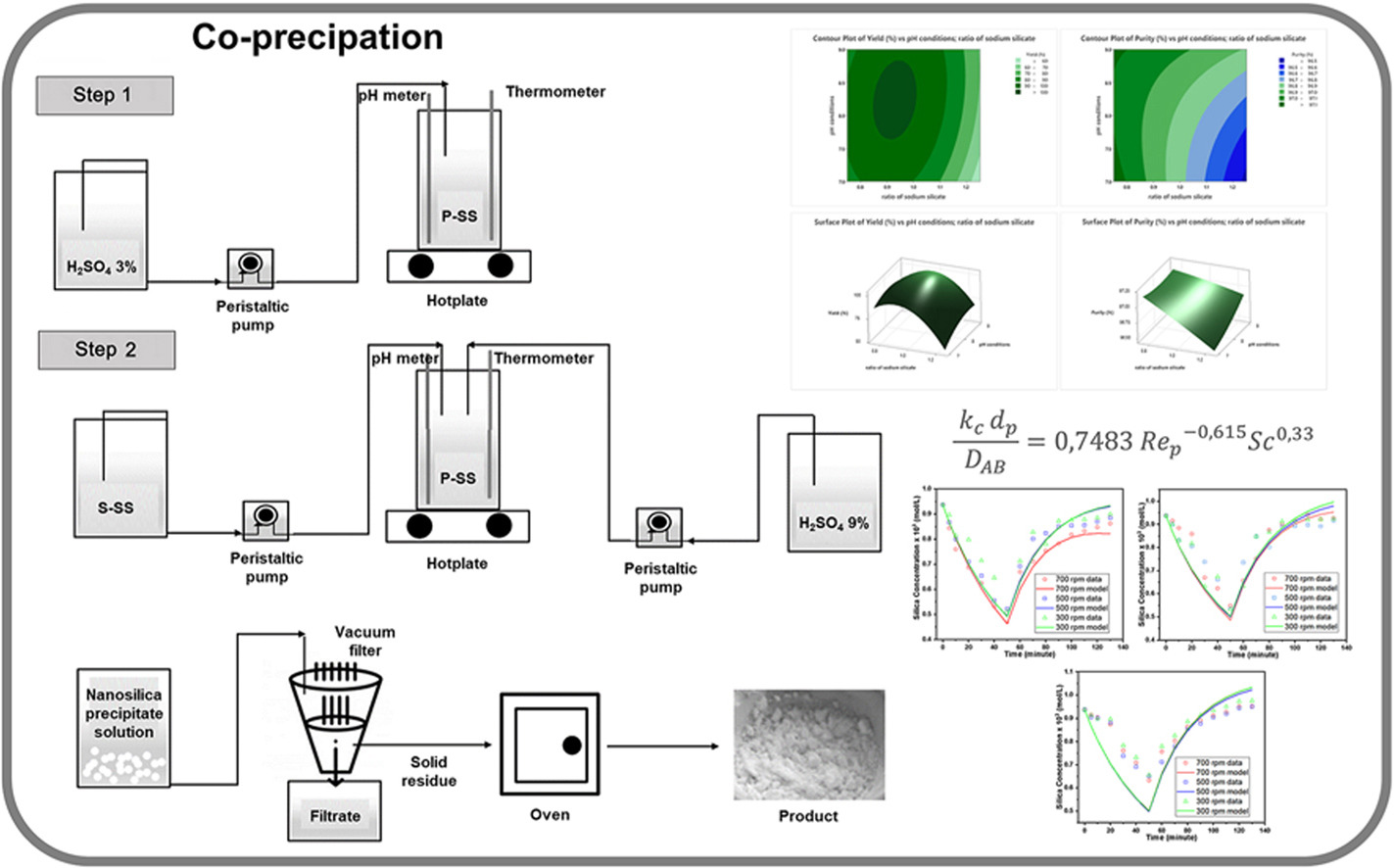• Optimized co-precipitation yields high-purity silica nanoparticles from geothermal sludge.
• Process maximizes yield (100 %) and purity (97 %) while minimizing reagent use and complexity.
• Nanoparticles are amorphous, nanosized (10–100 nm), and suitable for industrial applications.
• Converts waste sludge (>80 % SiO2) into nanomaterials with ∼60–80 % higher market value.
• RSM–CCD modeling ensures process predictability, reproducibility, and sustainability.
Silica nanoparticles play a vital role in a range of industries, including agriculture, pharmaceuticals, biomedicine, ceramics, and advanced materials. However, conventional synthesis methods typically rely on expensive and environmentally burdensome chemical precursors. This study explores the hypothesis that geothermal sludge, a by-product of geothermal power plants, can serve as a sustainable and efficient source for producing high-purity silica nanoparticles through a simplified synthesis approach. The process involves three key purification stages—water washing, acid leaching, and conversion to sodium silicate—followed by co-precipitation to obtain the final silica product. To optimize the synthesis, experimental conditions were statistically evaluated using response surface methodology to identify the effect of pH and sodium silicate ratio on the silica yield. The highest yield (100 %) and purity (97.03 %) were achieved under neutral pH conditions and a sodium silicate ratio of 1:1 by volume. Material characterization was conducted using elemental analysis, X-ray diffraction, and electron microscopy to confirm the structural and morphological properties. In addition, kinetic modeling revealed the influence of agitation speed and temperature on silica precipitation dynamics, and a dimensionless correlation was developed to quantify the mass transfer coefficient during the process. The findings demonstrate a promising and more sustainable pathway for silica nanoparticle production using industrial waste as feedstock. While direct financial metrics were not assessed, the use of readily available by-products and simplified process conditions suggest potential for economic advantages, meriting further techno-economic evaluation in future work.

